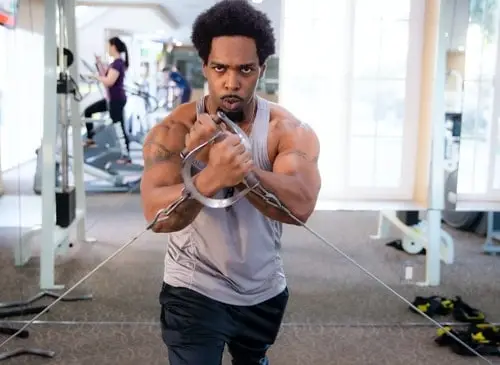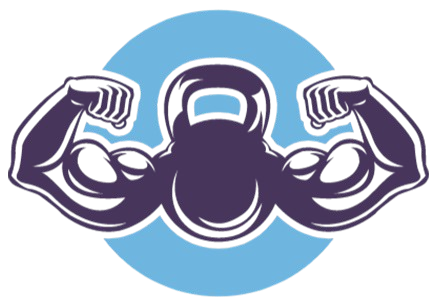Fitpro Income
What Is It Like Being A Personal Trainer? A Day In The Life
Interested in becoming a personal trainer but want to know a little more about what they actually do on a day-to-day basis?
They can’t all just be sitting around on their phones for hours whilst they wait for clients, right?
Nope, they actually work pretty tough and pretty long days, so if you see a personal trainer looking tired in your gym, after reading this article you will understand why.
After spending nearly ten years as a personal trainer in London, I will walk you through exactly what a personal trainer does on a daily basis, so you can see what its like to be a personal trainer.
Sound good?
Let’s go….

A typical day for a personal trainer will involve getting up early for morning clients, prepping sessions for that day, conducting pre-booked sessions, completing their own workouts, undertaking complimentary sessions, and scouting for new clients. A typical day is roughly 12-14 hours.
Before we begin explaining what a day in the life of a personal trainer actually looks like, we need to look at the different types of personal trainers.
There are three distinct types of trainers that we will be exploring today so that you can get a full idea of what it’s like for each.
They are:
- Personal trainers working in gyms
- PT’s providing “in-home” training
- Online personal trainers
These are three very different ways to train clients, so the typical day for each personal trainer will look very different.
I want to show you what one of my days would have typically looked like in diary-style format, as I think that will give you the truest insight. However, before I do this, I want to list what a personal trainer would typically do on a daily basis no matter what kind of environment they are working in.
Typical daily activities of a personal trainer:
- Preparing clients workout sessions for the day
- Training clients
- Completing administrative tasks
- Taking small breaks between clients
- Researching new training techniques/continuing education
- Writing new session/diet programs for clients
- Scouting for new clients to fill empty session slots
- Completing their own workouts
I’ll start with what a day in the life of a gym-based trainer looks like, as this is what I did for nearly ten years so I have a pretty good idea of what you should expect from a typical day.
My typical day as a gym-based personal trainer
Wake up at 5 am

My first sessions of the day were always at 6 am each day, I needed to travel to work, so I woke up around 5 am to make sure I had plenty of time to get to the gym and be fully prepared and waiting for my client when they walked through the door at 6 am for their session.
Before leaving for work, I would quickly eat a breakfast that I had prepared the night before (typically overnight oats or something similar).
5: 45: Prepare the days’ sessions

Once I arrived at the gym, I would make my way to the personal trainers’ room. I was seriously old school, so I had all my clients’ programs written out on paper cards that I stored in a filing cabinet there.
This may seem archaic to most people, but when I wrote out people’s exercise programs, they were written up for six months at a time which made keeping track of sessions and progressions a lot easier.
To simplify my day, I would check my diary and take out all the program cards for the clients I had booked in, then I would arrange them in order so that I could quickly move from one client to the next without needing to go back to the pt room.
6 am: Begin training the first sessions of the day

My first session of the day was always 6 am, and I had back-to-back sessions until 10:30 am.
I booked clients in this way because it was the most efficient use of my time in the gym.
I kept a small snack available that I could quickly grab and eat in between sessions so that I could keep my energy levels up.
10:30 Am: Very small break

This is one of the first small breaks I had during the day where I could get myself a small meal and possibly a coffee if I felt like I needed a “pick me up“.
It also gave me a chance to remove all the session cards I had already completed so far that day and add the next cards for the lunchtime sessions.
11 am: lunchtime sessions begin

This is where the day started to get a bit crazy!
From 11 up until 3 pm I was fully booked with back-to-back clients. This was great but obviously very tiring, and why the coffee at 10:30 came in so handy.
No time for a proper meal between sessions here, so all I could manage were a few handfuls of nuts that I had stashed in my locker. I got to them as my next client was warming up.
3 pm Workout time & lunch

I am not a fan of training on a full stomach, so I scheduled my own workouts at around 2-3 pm each day. This is also the time of day that the gym tended to be the quietest.
As soon as I’d finished my workout and had a quick shower, I would sit down to my lunch which I brought in from home (meal prepping is a must for anyone wanting to be a PT, it’ll save you a fortune).
4:30 pm Quick admin check and program planning for evenings sessions

Just before the evening sessions got going, I would make sure I had the majority of my admin sorted for the day.
This meant I checked to make sure that I had confirmation of anyone coming in for complimentary sessions the next day, all paid sessions were signed off and I checked that none of my clients were nearing the end of their session blocks or training programs.
5 pm Evening sessions began
Pretty similar to the afternoon sessions here as people love training at lunchtime and evenings. People aren’t usually quite so willing to get up before 6 am, so if you find those people, you grab them as quickly as you can!
I would usually have back-to-back sessions from 5 pm until 8 or sometimes 9 pm most weekdays. Luckily, most people in the city want to go out and drink on Friday evenings so I didn’t mind working late Monday to Thursday.
I again made use of small snacks that I could quickly eat whilst my clients were warming up, things like nuts or protein bars are pretty good for this as they keep you going, but you don’t feel too full to demo exercises.
8-9 pm end of the day prep morning sessions and leave

After all the days’ sessions were finished, I tried to get any remaining admin finished asap and if I remembered to, I would get the next mornings’ cards laid out on my clipboard so I didn’t have to do it in the morning.
Finally by about 9:15 or so I was ready to leave.
10 pm, home, dinner, shower, BED!

By this point in the day, I was just about ready to drop. With a solid ten or more sessions completed in a day with only a few short rest periods, I was exhausted.
I would get home at around 10 pm, eat my dinner which was usually food I had prepped on the previous Sunday for the week ahead, had a quick shower, and then got into bed as quickly as I could to try and get as much sleep as possible so I was ready to do it all again the next day.
whew!
Yeah, so remember when I said at the beginning of the article that if you saw a tired-looking personal trainer in your gym you would understand why?
Well, hopefully, you can now see that they have a pretty decent reason to look a little tired at around 2 pm or so.
I should also mention that if I ever got the opportunity to, I would find one of the loungers next to the pool and try and catch a few minutes’ sleep at the quieter portions of my day (usually after my lunch).
This is actually a pretty great idea, and if you get the opportunity to get some sleep during the day I really recommend you go for it.
What would a day for someone that trains people in their homes look like?
Working outside of a gym would be a little different, but many factors stay fairly similar.
The main difference would be that a PT that trains people in their own homes typically has fewer sessions each day.
This is not because they are not as good at marketing or anything like that. It has more to do with the fact that truly freelance trainers (trainers that don’t use gyms to train people) have far fewer expenses to cover as they aren’t paying for gym rent etc.
This means they can train fewer people and make the same (if not more potentially) than trainers working in gyms, as they are taking home all the profit.
5 am Wake up
People still like training early whether they are in a gym or not, so a 5 or 5:30 am wake-up time is not unheard of.
Time for a quick shower, breakfast, and making sure you have all the equipment they will need for that morning’s sessions packed away in their equipment bag.
6 am: First session
Arrive at the client’s home or a park local to them, meet up and start the session. Generally, the sessions will be more focused on multi-joint movements when training clients outdoors.
You would be using equipment like sandbags, kettlebells, and weighted vests to give your clients a great workout with limited access to weights.
You would usually be conducting 30 minutes to 45-minute sessions rather than the 1-hour sessions you would give for gym-based workouts due to the high intensity of the training style.
7 am: Second session
If your next client lives fairly locally and you are driving to them, you can probably fit your next session of the day in at around 7 am.
This would again be another 30 minute to 45-minute session.
8 am: First break of the day
By 8 am, most people will be going to start their workday, so you are likely to have a gap here of a few hours.
This can depend entirely on the area that you are training in and also your clientele, as there are many people who now work from home or may have retired that you could train.
If this is the case, you would want to organize the sessions to be as close together as possible without having to worry about running late from traffic, etc.
11 am: Lunchtime sessions begin
You may find that people want to train around lunchtime as it just works with their schedule, so you could expect another one or two sessions from between 11 am to 2 pm each day.
2 pm: Mid-day break
This would usually be your first large break in the day as you would not expect to get many sessions booked for this time of the day. This is again dependant on your location and type of clientele.
From what I understand of trainers that work externally from gyms, this tends to be the time of day that they travel back to their homes to have their lunch and to complete any admin tasks they may have.
It also gives them the opportunity to drop off the equipment from the morning sessions and prepare the remaining evening sessions if there are any.
5 pm: Last sessions of the day
After preparing the evenings sessions, filling your equipment bag, and traveling to your client’s home, you are underway for what may be your last session of the day.
It is possible that you may have one more session booked in from 6 pm to 7 pm, but due to the fact that you are paying very little to run your business, it may not even be necessary to work past 6 pm each day.
6 pm: Home, shower, dinner, and marketing
By now you should see that the distinct advantage the external trainer has over the gym-based trainer is that they have considerably more free time in the day that doesn’t need to be crammed with sessions to make sure the gym rent is covered each month.
There is of course a downside, and that is that you have no way of bumping into potential clients as you do in a gym environment.
This means that after you have showered and eaten, you will likely be spending your evenings working on your website, social media, or any outreach schemes you have in order to make sure you have a steady stream of paying clients.
9 pm: Bed
You’ll see here that as an external trainer you are much more likely to get a decent amount of sleep, as you won’t be needing to work each hour of the day.
You will typically find that training four or so clients per day are more than enough to keep your business afloat as long as you are charging for your sessions correctly.
Very different days
You can see from these two comparisons that the type of day you will encounter is really quite different if you work as a personal trainer in a gym environment or as a PT that trains people in their homes.
It’s entirely up to you as to which route you want to go down, as there are many pros and cons of each.
I won’t be going too much into detail about the pros and cons of each, as this article is solely about what a day in the life of these people would look like.
What about online personal trainers?

The last option we have is that of the online personal trainer.
This way of training people has become popular in the last ten years or so.
An online personal trainer has no physical contact with their clients, as all the work is done via web chats, emails, and phone calls. This leaves them able to train clients all over the world.
Generally, your day would be made up of the following tasks:
- Arranging all information so they are ready for each online consultation that day
- Writing up nutritional information and diet plans for clients
- Evaluating clients progress and workout programs
- Focussing far more heavily on social media to gain clients
- Creating video content for a YouTube channel that generates income
One of the key aspects of training as an online trainer is that it is very easily scalable.
You can see from the daily regimes of trainers in gyms and external trainers are that they can only train so many people each day due to there being a limited amount of hours available. Unless you are taking boot camps or something similar, you are limited to the number of people you can train at once.
With online training, you can be training potentially hundreds of clients each week! You cannot usually charge as much as you would if you were to be physically with the client, however, the sheer number of clients that you can cater to easily covers this.
I have not listed out what a typical day in the life of an online trainer would look like, simply because your time is your own. You may have a few consultations booked in to check in with your clients’ progress, but for the rest of your tasks, you can complete them as and when you wish.
This leaves you plenty of time for your own workouts and to engage with social media in order to build your customer base.
After reading all this, you may be thinking “This looks exhausting, is it really worth it?”. Well, I’m glad you asked because I wrote an article that addresses just that, give it a read, I am sure you’ll find it very useful.
Is It Worthwhile Becoming A Personal Trainer?
And if that doesn’t motivate you, I am sure this article will.
Is It Possible To Earn 100K A Year As A Personal Trainer?
Conclusion
Hopefully, this article answers the question “what do personal trainers do on a daily basis”, but it should have also shown you just how different each type of trainer’s day can be.
There are pros and cons to each method of instruction, and I will leave it up to you to decide which route you think would best suit your personality.
If you are looking to begin a career as a personal trainer, I can highly recommend it as it’s a really fantastic, (if a little tiring) career.
Go get ’em!
